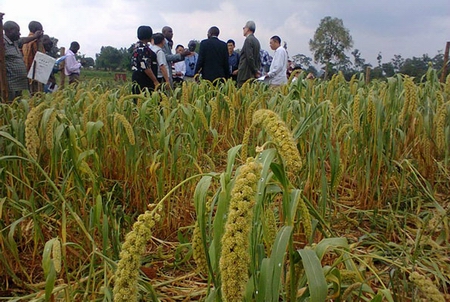
Millet is a staple food crop for many communities in different parts of the country, that is, in northern, western and eastern regions. Besides being grown for food and to earn an income, it is central as well to many cultural practices such as child naming, traditional marriage ceremonies, and welcoming special guests.
There are definitely a number of varieties available with different yielding capacities and nutrition qualities, which are under study at research institutes like the Mukono Zonal Agricultural Research Institute (Muzardi).
“This is one of our primary research institute. Although it was for the central region, some of the work done here is for countrywide distribution,” says Dr Okasaai Opolot, director for crop resources at ministry of agriculture.
At Muzardi, the local varieties are in the field alongside foxtail millet (Setaria italic), which originates from China and is undergoing trials before being introduced to farmers and thus widening their options of varieties of the cereal to plant. It is one of those studies being carried out whose results are to be scaled up throughout Uganda.
The first consignment was five kilos of seeds which were planted. The results showed a yield capacity of 2.5 tonnes per hectare, according to Dr Peter Lusembo, director of research at Muzardi.
“This compares with 1.3 tonnes per hectare, 1.4 tonnes per hectare and 1.5 tonnes per hectare per hectares of the local varieties,” he adds. Though in China, the yield is twice that, averaging up to five tonnes per hectare.
In Uganda, the field trials show, foxtail millet takes 83 days from planting to maturity. This compares with the local millet which matures in 130 days. However, Dr Lusembo states there is need for further trials to evaluate the performance over a longer period of time and under different conditions. Also, at this stage, the researchers are considering how foxtail millet can be utilised in Uganda. “Let us find ways to innovate with the crop, the different ways to localise it,” he says.
So far, what has been tried is making porridge out of it. The researchers found that it has to be properly threshed to remove husks which have a “bitter” taste. Other possible uses being explored is brewing alcohol from it, making starch, and as animal feed.
The millet was introduced under a partnership between Uganda and China, which is supported by the UN Food and Agriculture Organisation (FAO) to transfer expertise and exchange technology between the countries.







